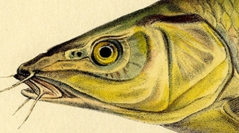

 European Journal of Taxonomy
2018 (410) - Pages 1-29
European Journal of Taxonomy
2018 (410) - Pages 1-29The identity of Barbus capensis, as described by Andrew Smith (1841), is reviewed following a careful examination of the lectotype in the Natural History Museum, London. Evidence shows clearly that it represents a specimen of the Berg-Breede River whitefish or ‘witvis’ and not the species known as the Clanwilliam yellowfish, to which it was attributed until recently. The original illustration of the species is shown to be a composite of these two different species. A replacement name for the Clanwilliam yellowfish is drawn from the earliest described synonym, Labeobarbus seeberi (Gilchrist & Thompson, 1913). Following widespread recognition that the genus Barbus Daudin, 1805 does not occur in sub-Saharan Africa, the generic status of the Berg-Breede River whitefish (witvis) and other tetraploid cyprinines of southern Africa is reviewed, taking genetic and morphological characters into account. Five distinct lineages, each representing a genus, are recognized, including the genera Pseudobarbus Smith, 1841 and Cheilobarbus Smith, 1841, and three new genera described herein: Amatolacypris gen. nov., Sedercypris gen. nov. and Namaquacypris gen. nov.
Taxonomy, genera, mtDNA, tetraploids, Smiliogastrini.